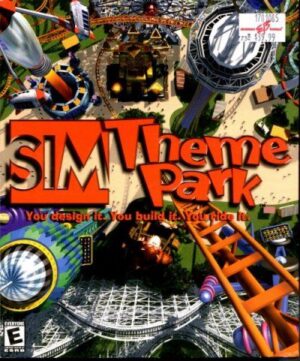Retro Replay Review
Gameplay
Wild Wild Racing delivers a straightforward but addictive off-road racing experience that feels tailor-made for early PlayStation 2 hardware. Right from the start, you choose one of nine dune buggies and jump into races spanning deserts, tropical jungles, icy tundras, and more. The controls are accessible—analog steering, simple accelerate/brake buttons, and a minor emphasis on drift mechanics—making it easy for newcomers to pick up and play.
(HEY YOU!! We hope you enjoy! We try not to run ads. So basically, this is a very expensive hobby running this site. Please consider joining us for updates, forums, and more. Network w/ us to make some cash or friends while retro gaming, and you can win some free retro games for posting. Okay, carry on 👍)
The core of the game lies in its three main modes: Championship, Challenge, and Time Attack. Championship mode strings together a series of global tracks—think the American desert’s scorching heat, India’s dusty villages, Iceland’s frozen wastelands, Australia’s red Outback, and Mexico’s sun-drenched valleys—where you race for points and titles. Each victory unlocks new circuits and occasionally new buggies, giving a genuine sense of progression.
Challenge mode spices things up with stunt courses and letter-collecting events. In stunt courses, you’re tasked with mastering jumps, loops, and tight hairpin turns under a time limit. Letter events scatter letters across the track, encouraging exploration off the beaten path. Time Attack strips away other racers and focuses purely on shaving seconds off your best lap time, appealing to completionists and speed demons alike.
Graphics
As one of the very first PS2 titles in the U.S., Wild Wild Racing showcases early next-generation visuals—some still blocky by today’s standards, but impressive for its time. The dune buggies boast solid polygon counts and simple but effective texture work. You can see rivets, roll cages, and bumper details that help differentiate each vehicle.
Environments are sprawling and diverse. Each location—be it the orange hues of the desert or the shimmering blues and whites of an Arctic circuit—features distinct color palettes and terrain layouts. Draw distances are generous, letting you spot dunes and rock formations far off in the distance. Occasional texture pop-in and flat background hills remind you that this game launched at the dawn of the PS2 era, but they rarely detract from the fun.
The lighting model is basic but serviceable. You’ll notice sharper contrasts in bright sunlight and softer palettes under overcast skies in Iceland or India’s rainy monsoons. Shadows aren’t dynamic, but dust kicked up by your buggy adds a satisfying sense of speed and momentum. All told, the graphics hold up as a time capsule of early-2000s console gaming.
Story
Wild Wild Racing doesn’t offer a deep narrative or character arcs—it’s more about the journey and the thrill of global competition. From the fictional opening cutscene that declares you the “rookie off-road talent” to the podium celebrations when you win a championship, the game keeps the tone light and focused on racing prowess.
Each race locale introduces a bit of cultural flavor. You might kick up Dust Devils in the American desert, navigate crowded village huts in India, or dodge melting icebergs in Iceland. While there are no voiced characters guiding you, simple text prompts and victory screens provide enough context to maintain a sense of purpose.
If you’re looking for a story-driven adventure, Wild Wild Racing won’t satisfy that craving. Instead, it offers a loose “world tour” narrative: conquer each continent’s tracks, master special challenges, and collect shiny trophies for your virtual mantel. For many players, the implicit storyline of rising from novice to champion is motivation enough.
Overall Experience
For potential buyers seeking pure arcade-style off-road fun, Wild Wild Racing still delivers a breezy, pick-up-and-play experience. The variety of vehicles and global tracks keeps races feeling fresh, and the assortment of modes ensures you can revisit content in different ways—whether you’re chasing lap records or hunting down hidden letters.
Challenges can be demanding at higher difficulty levels, especially stunt courses that require near-perfect landings and precise steering. Yet the forgiving checkpoint system and the ability to retry instantly strike a good balance between challenge and accessibility. Multiplayer splitscreen adds replay value, letting two players tackle the same dusty trails head-to-head.
While its graphics and simplistic story reflect its launch-era pedigree, Wild Wild Racing remains an engaging off-road racer with nostalgic charm. It laid groundwork for more complex PS2 racers to come, and for many fans, it’s a fond reminder of the console’s early days. If you own a PlayStation 2 and crave uncomplicated, globe-trotting dune buggy action, this title is well worth dusting off your memory card for.
 Retro Replay Retro Replay gaming reviews, news, emulation, geek stuff and more!
Retro Replay Retro Replay gaming reviews, news, emulation, geek stuff and more!









Reviews
There are no reviews yet.